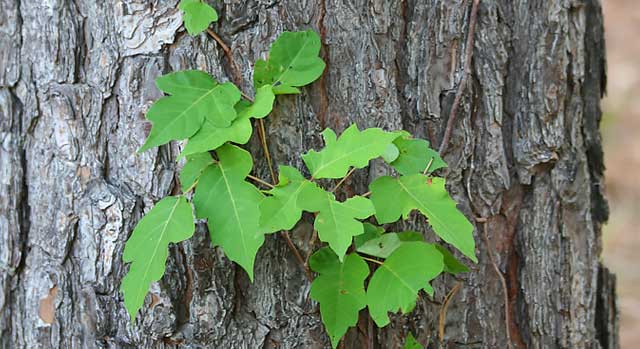Common Skin Rashes
These plants are the most common causes of skin rash among children and adults in the United States and Canada. The rash consists of painful and long continued swellings and eruptions and is caused by an allergic skin reaction to urushiol oil found in the leaves, stem and other parts of the plants. Urushoil oil stays active on any surface for up to five years. Even dead plants in underbrush can transmit the toxic oil to your skin! Exposure to the oil occurs through any of the following:
- Touching any part of the plants.
- Touching clothing or other objects that have contacted the plants.
- Touching pets or other animals that have contacted the plants.
- Exposure to the smoke of burning plants.
Poison Ivy
Poison Ivy — can be found growing as vines or shrubs, predominantly east of the Rocky Mountains. The leaves are often clustered in groups of three, and will either have smooth or notched edges.
Poison Oak
Poison Oak — is more common west of the Rockies. It usually grows as a small bush, but sometimes as a climbing vine. Its leaves are smooth-edged and cluster in groups of three, five or seven.
Poison Sumac
Poison Sumac — grows exclusively in very wet or flooded soils such as those found in swamps and peat bogs. It’s been known to grow as far west as Idaho, but is most commonly found on the east coast, especially in wet areas of the southeast. The leaves are generally smooth and oval-shaped, with seven to 13 growing on each stem.
Identification
Learning to identify these plants and avoiding exposure is the best way to prevent an allergic reaction:
- Poison ivy is a vine, with three shiny green leaves and a red stem.
- Poison oak is a bush, with groupings of three leaves that look similar to poison ivy.
- Poison sumac is a woody shrub, with leaves arranged in pairs.
Poison Control
For more information on plants and tips on poison-proofing your home, visit www.poisoncontrol.org.

